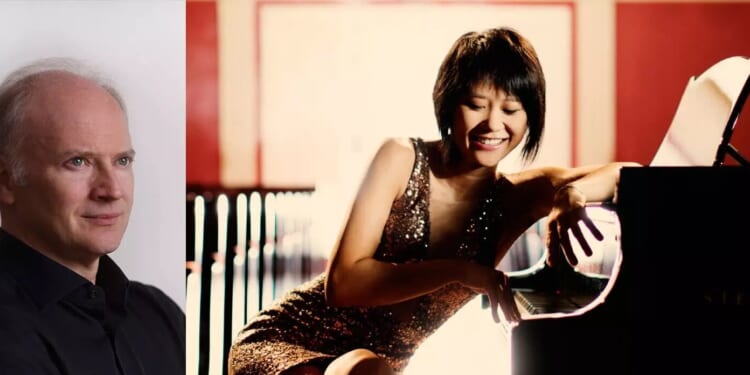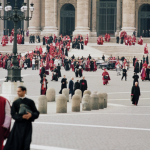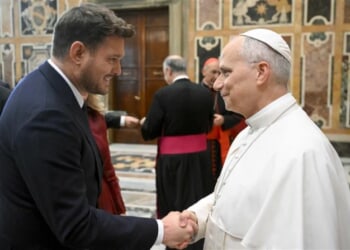President Trump’s takeover of the John F. Kennedy Center for the Performing Arts earlier this year ruffled some feathers, but the first full season under his administration’s leadership has gotten off to a successful start with the National Symphony Orchestra’s much-anticipated opening-night gala concert.
The concert unfolded within a larger Kennedy Center gala held to benefit the symphony, now embarking on its ninety-fifth season. All told, the event raised nearly $3.5 million, more than doubling last year’s intake and close to what the New York Philharmonic brought in at its season-opening gala last year. This financial success is only further proof that, under the music director Gianandrea Noseda, whose contract was recently extended until the orchestra’s centennial year in 2031, the National Symphony has joined the first rank of American orchestras.
Mostly featuring music connected with the United States, the concert began with a skilled rendition of Aaron Copland’s Fanfare for the Common Man (1942). Originally a submission to the Cincinnati Symphony as part of a bevy of works celebrating the Allied war effort, the piece was meant to honor the labor of ordinary people working for victory. Maestro Noseda led a solid, brass-heavy performance that moved from solemnity to a concluding spirit of determination.
He followed with the Kennedy Center’s composer-in-residence Carlos Simon’s Warmth from Other Suns, a piece whose title comes from a scholarly book about the Great Migration of black Americans from the rural South to the industrial North. Composed in three movements, it captures the journey well, with hesitant strings rising to a frenzy of disruption before settling into modulated contentment. The selection indicates that the Kennedy Center remains committed to inclusion and artistic freedom. Appearing on stage after his work was performed, Simon received a standing ovation from the audience and a warm embrace from Maestro Noseda.
The concert’s showpiece was Tchaikovsky’s Piano Concerto No. 1, played with elegant intensity by the splendid Chinese American pianist Yuja Wang. The piece bears a particularly strong American connection: its world premiere was in Boston in 1875, and Tchaikovsky himself conducted it during the opening-week festivities of New York’s Carnegie Hall in 1891. Now in its sesquicentennial year, the piece radiates Russian folk harmonies within the strictures of European compositional technique; the concerto is a seminal work of the Russian school, which emerged during Tchaikovsky’s maturity, while still deferring to the European musical tradition. Wang tends to play with an impetuosity that can make her music sound rushed, but Noseda led the orchestra firmly enough to balance her expressiveness. Wang’s encore, which the maestro described as a “crazy transcription” for piano of the third movement (allegro molto vivace) of Tchaikovsky’s Symphony No. 6, reveled in such frenetic abandon that its conclusion drove some audience members to believe the concert had either ended or paused for intermission. A few awkward moments passed before the wayward crowd was corralled back to their seats, but the sheer energy of the moment and the program’s failure to mention that there would be no intermission suggest that this selection might have been better placed at the bottom of the program.
After order was restored, Noseda continued with a sharp and evocative reading of the second Largo movement from Antonín Dvořák’s Symphony No. 9, which he composed while residing in America as the director of the now-defunct National Conservatory of Music, and which had its world premiere at Carnegie Hall in 1893. Titled “From the New World,” its American inspiration was a splendid fit. Not all the pieces had an American theme. As Noseda pointed out from the podium, Rimsky-Korsakov’s Capriccio espagnol has no connection to the United States. The work’s five spirited movements, however, formed an apposite end to an event championing a new era of creativity and superlative artistry in one of America’s finest institutions















